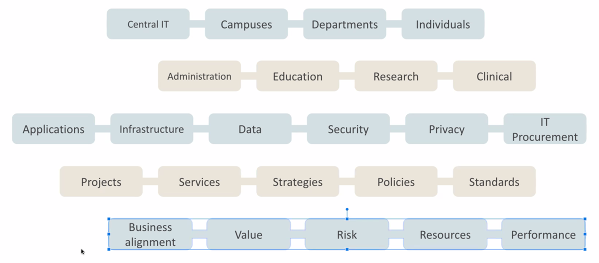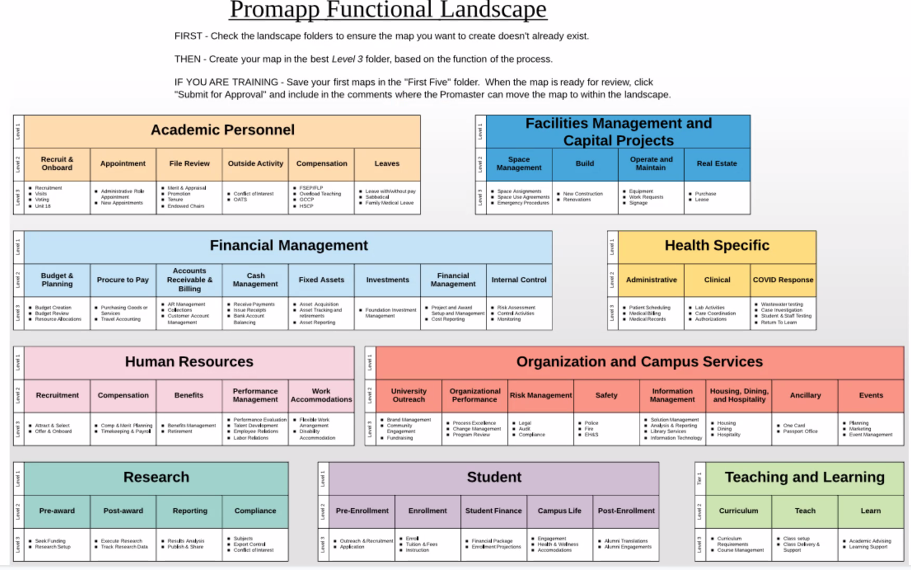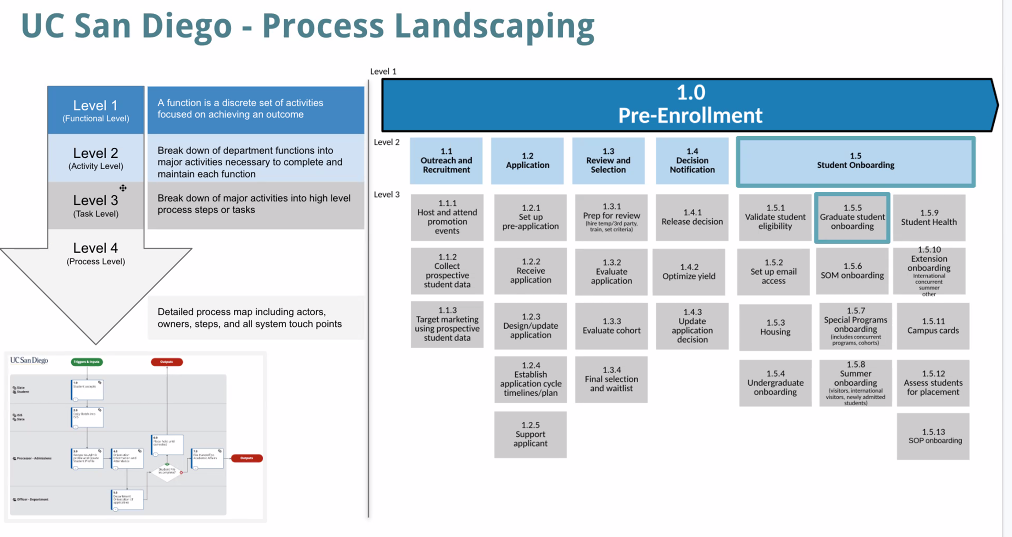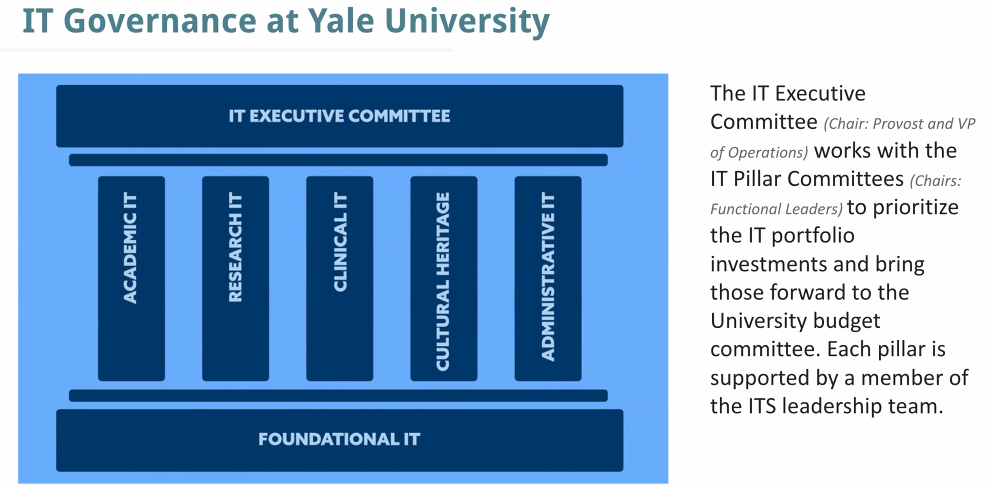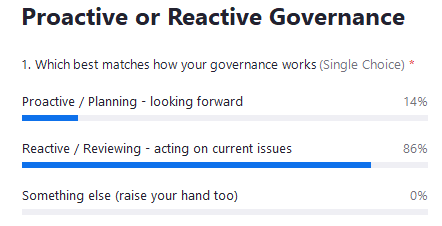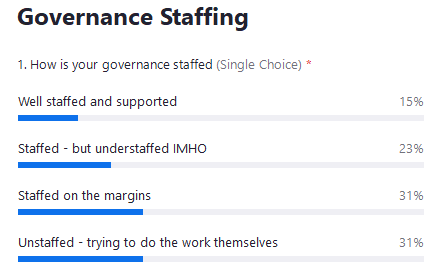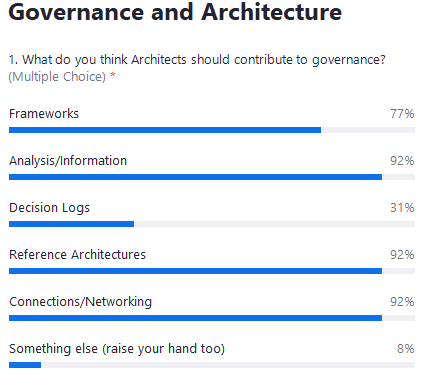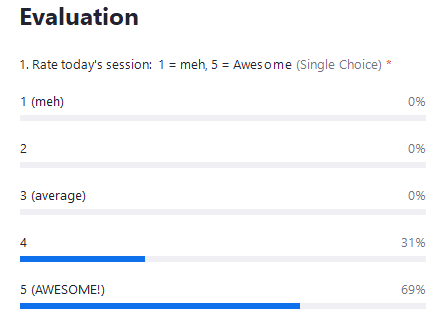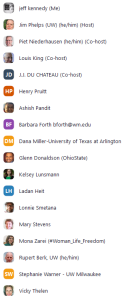These supplementary notes serve primarily as a placeholder, as this session was crowdsource-scribed directly into the slide pack.
Logistics
- 28 October 2022
- Piet Niederhausen, University of Washington
- Jim Phelps, University of Washington
Discussion
Context
- IT Governance has always been challenging, and has always been challenging in higher education, and is becoming increasingly challenging on account of factors such as the proliferation of solutions, of builders, of initiatives, and the corresponding demand for data integrations and user experiences, and potentially compounded by the widespread adoption of "agile" methodologies.
- The scope of "IT Governance" is many varied, ranging from the institution as a whole to other architecture partitions, and is able to exercise a variety of levers and seek alignment with a variety of outcomes:
Case Studies
UCSD
- As part of USCD's ERP Systems Refresh program a functional landscape was defined and baked into an active and maintained repository, as below:
- If somebody says "we are going to buy a new piece of technology" then the governance function refers to this deeper-level process map and asks questions like "why do you need that?" and "what from our current holdings does not work for you?" and this provides a robust framework with which to execute governance, particularly against the backdrop of the significant ERP Systems Refresh program:
- During the process mapping there are also spreadsheets underneath the processes that are used to accumulate knowledge about every data attribute that's involved in fulfilling a process task, all backed up by an enterprise data catalogue tool (from IBM, https://www.ibm.com/products/information-governance-catalog).
Yale University
- Yale has domain-by-domain IT Governance arrangements convened by the Office of the CIO but led and primarily staffed by people from the business: the diagram below is from https://its.yale.edu/about-it/it-committees/governance-committees
- Underneath this "pillars" concept is the "Foundational IT" committee, the largely-internal-to-IT "Service & Portfolio Executive Committee", working closely with the pillars to understand how to optimize IT service delivery across the pillars. This is led by the directors of IT Service Management and the IT Project Management Office.
William & Mary
The University of Texas at Arlington
- IT Governance Framework at UTA, depicted below, includes some spec
Survey Responses
Note that this call was scribed directly into the slide pack, so please refer to the slide pack to see the discussion and contributions made durin
- 17 survey responses were received.
- Drivers for governance of the solution space included two that stood out together: "desire for more-strategic IT spending" and "growing complexity".
- Goals for governance of the solution space saw "better alignment of IT services to institutional | business goals" as the standout.
- Basis for Decision-Making includes strategies and projects, understanding value, cost, and demand.
Live Polls
- Generally, attendees on the call characterized their IT Governance as being more reactive than proactive:
- More than half of the attendees on the call indicated their governance efforts were either staffed on the margins or were unstaffed:
- Quite a lot is expected from architects in contributing to the creation and delivery of effective IT Governance:
- This session was rated very positively!
The Role of Architects
- Architects appear broadly in a range of roles related to IT Governance, often at the level of individual projects or supporting procurement and sourcing processes.
- Architects could be doing more by using frameworks such as business capability analysis
Further Information
Resources
- Slide Deck is a Google Slides presentation into which the scribing of this call was made directly, and from where a more-detailed breakdown of the the survey responses is available.
- Survey Device is a Google Form and responses are welcome on an ongoing basis.
Zoom
Participants
Chat
- 07:07:42 From Piet Niederhausen to Everyone: https://docs.google.com/presentation/d/1hjwTcj5CPfgBzUuyDk18ptVkP3SqJmPFsI8IgPo_feM/
- 07:15:21 From Kelsey Lunsmann to Everyone: Do you know if they used the APQC process classification for level 4?
- 07:19:11 From Ashish Pandit to Everyone: IBM igc https://www.ibm.com/products/information-governance-catalog
- 07:23:36 From Barbara Forth bforth@wm.edu to Everyone: W&M - https://www.wm.edu/offices/it/about/officecio/governance/index.php
- 07:24:39 From Barbara Forth bforth@wm.edu to Everyone: DG oversight reports up to Cabinet instead of IT - emerging
- 07:30:39 From Louis King to Everyone: @Rupert - The service governance groups do recommend portfolio projects to launch or change service offerings.
- 07:32:33 From Ladan Heit to Everyone: At Laurier, this is just beginning. Formation of the Digital Strategy Working Group (stakeholders from across the institution) - with the continued goal of aligning IT initiatives with institutional goals.
- 07:34:02 From J.J. DU CHATEAU to Everyone: @Barbara,Good move IMO for DG to report Cabinet instead of IT. We are similar, but sometimes struggle with DG getting into IT gov'n areas. Those boundaries aren't well understood and that can confusion.
- 07:34:50 From jeff kennedy to Everyone: For the _IT_ we manage a small suite of "IT Capability Plans" (e.g., infrastructure hosting, networking, applications, digital workplace...) that identify and provide just-enough shape to initiatives proposed for investment from our Digital Investment Portfolio. Those IT Capability Plans roll up into our Technology Plan, which provides more of a north star for decision-making (i.e., we expect to see Cloud + DevOps + APIs).
- 07:36:28 From Mary Stevens to Everyone: Our university spent a lot of Time coming up with a strategic vision. And then we did planning, but we though about what things we needed to do and how that mapped to the strategic plan, rather than thinking about what elements were needed to support the success of the strategic plan. I think we are trying to find a new way to leverage strategic plans into it planning.
- 07:38:19 From Barbara Forth bforth@wm.edu to Everyone: https://www.wm.edu/about/administration/strategicplanning/vision2026/
- 07:41:09 From Ladan Heit to Everyone: I picked "pro-active" to be fair to those who are really trying very hard to operationalize the "pro-active" model. And also because we have been pro-active in a number of key initiatives - particularly just prior to the pandemic and during the pandemic.
- 07:43:08 From Barbara Forth bforth@wm.edu to Everyone: Proactive in identifying new capabilities and introducing new ideas in trying to see what type of work can and will be supported- Example - driving to Master Data, Alignment of Standards
- 07:46:14 From Barbara Forth bforth@wm.edu to Everyone: Recognition that areas need more data focused individuals, new hires are being hired with DG and process alignment is part of job specifications
- 07:52:36 From Barbara Forth bforth@wm.edu to Everyone: How many groups have a team of architects rather than a few individuals with some architecture skillage?
- 07:53:45 From Jim Phelps (UW) to Everyone: @Barbara - we have a team of 3. UW-Madison has a team of 3 (I think).
- 07:54:03 From Lonnie Smetana to Everyone: We are a small team of architects in the Planning and Governance unit of Central IT.
- 07:54:30 From Kelsey Lunsmann to Everyone: @Barbara - UO has two architects: myself a business architect and my colleague, Loring, enterprise architect….I think we’re looking to bring on a solution architect and our Tech Infrastructure group is bringing on a cloud architect
- 07:54:31 From Jim Phelps (UW) to Everyone: @Barbara - though this is a skewed sample :-)
- 07:57:53 From Henry Pruitt to Everyone: we have a team of 3 in the enterprise architect area... there are domain architects, solution architects, security, and more infrastructure related architects in different teams
- 07:58:05 From J.J. DU CHATEAU to Everyone: @Barbara - We currently have 2 EAs (part of the CTO's office) and a network architect. Also have a business architect that we work with quite a bit in the Teaching & Learning IT area. Then there are solutions architects in various IT areas (sometimes doing EA work).
Overview
Content Tools

